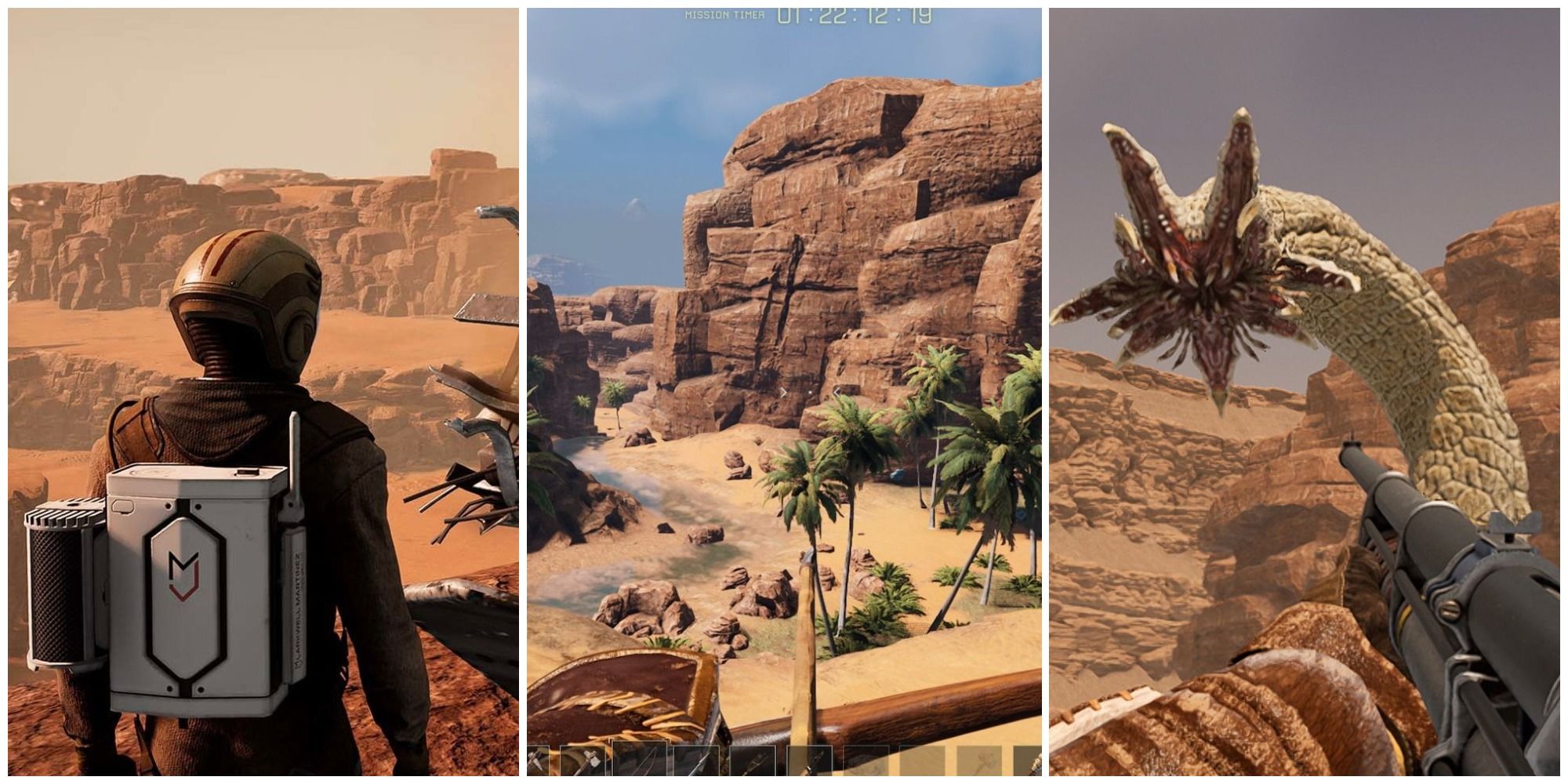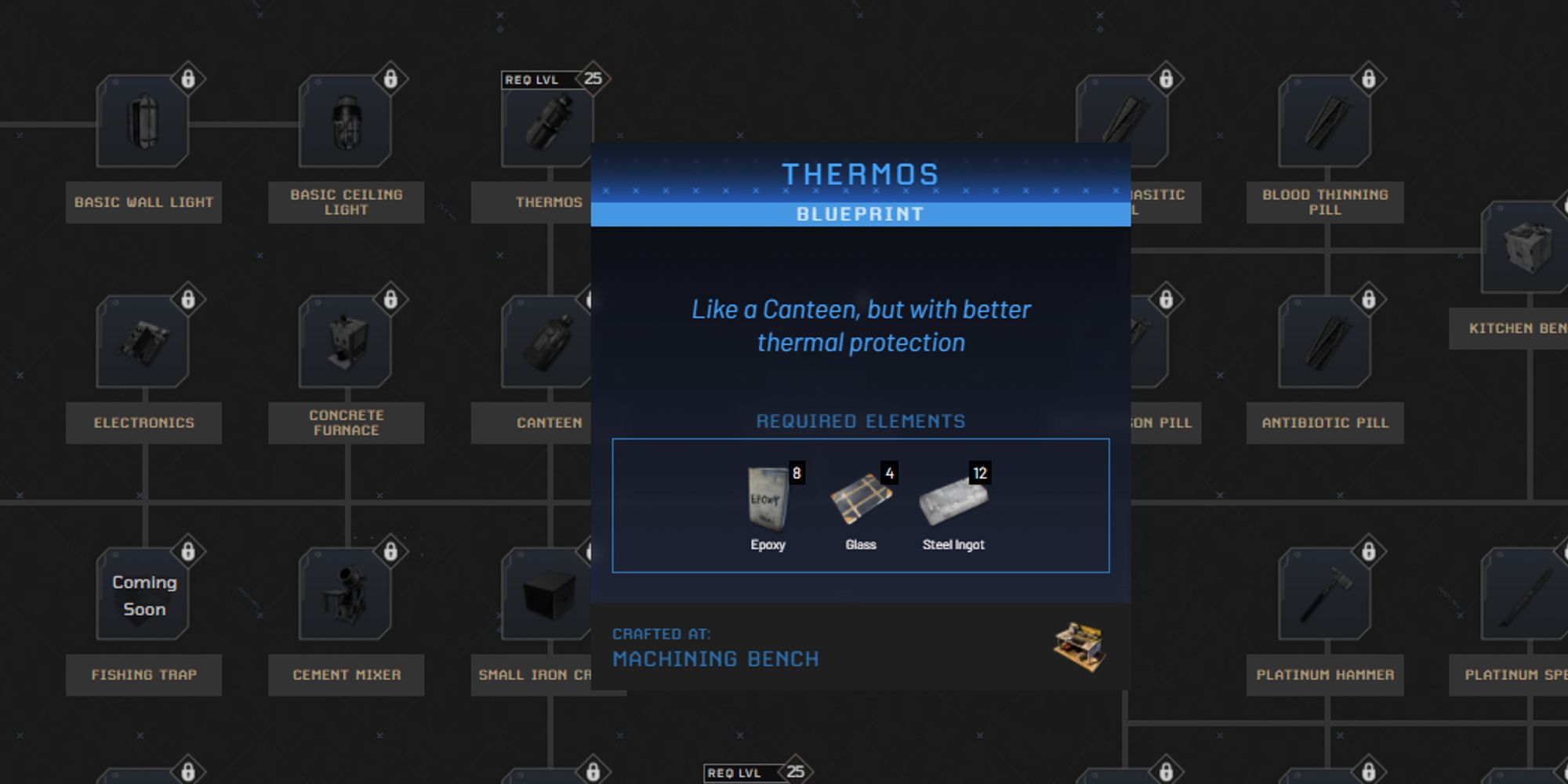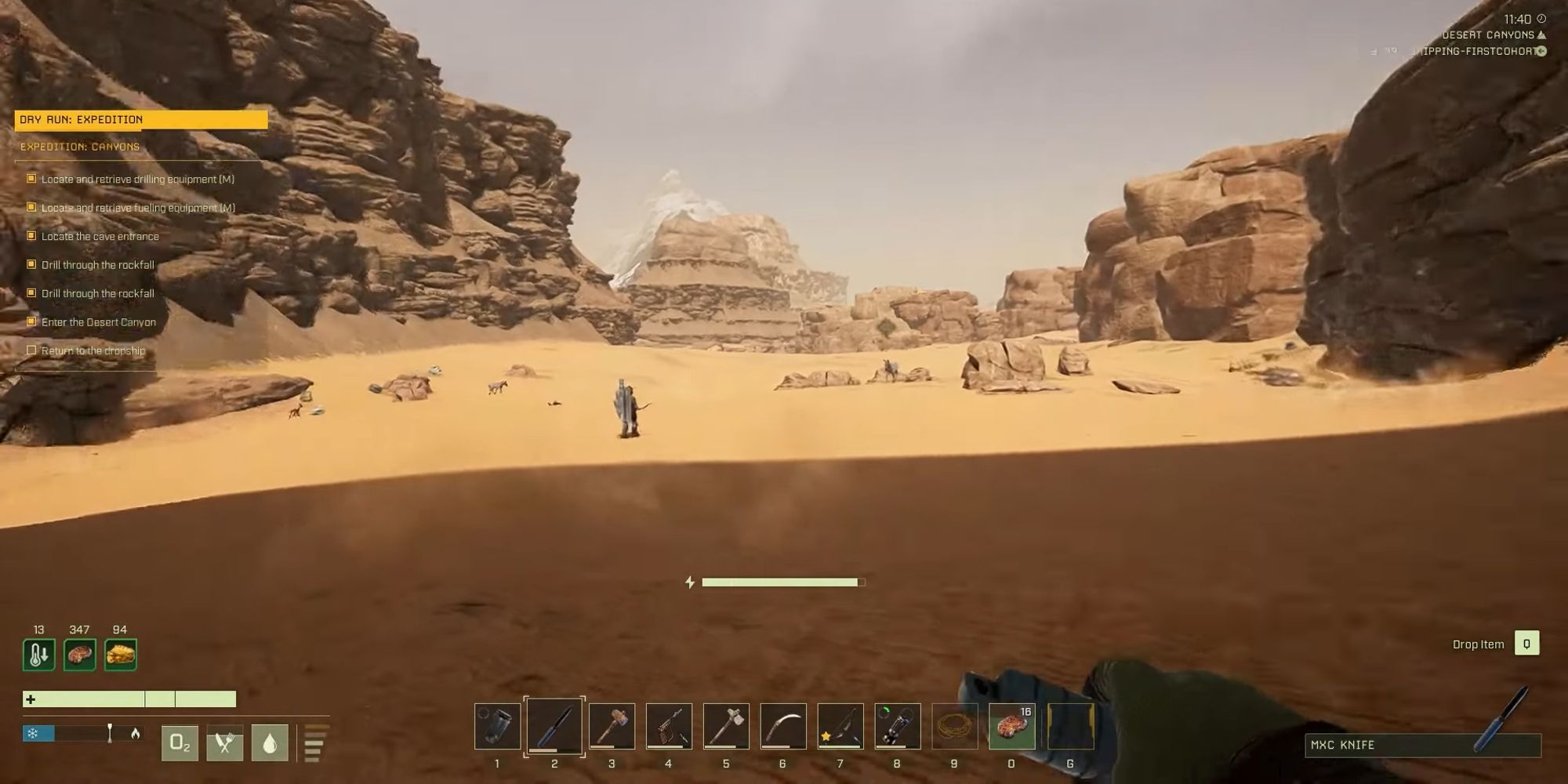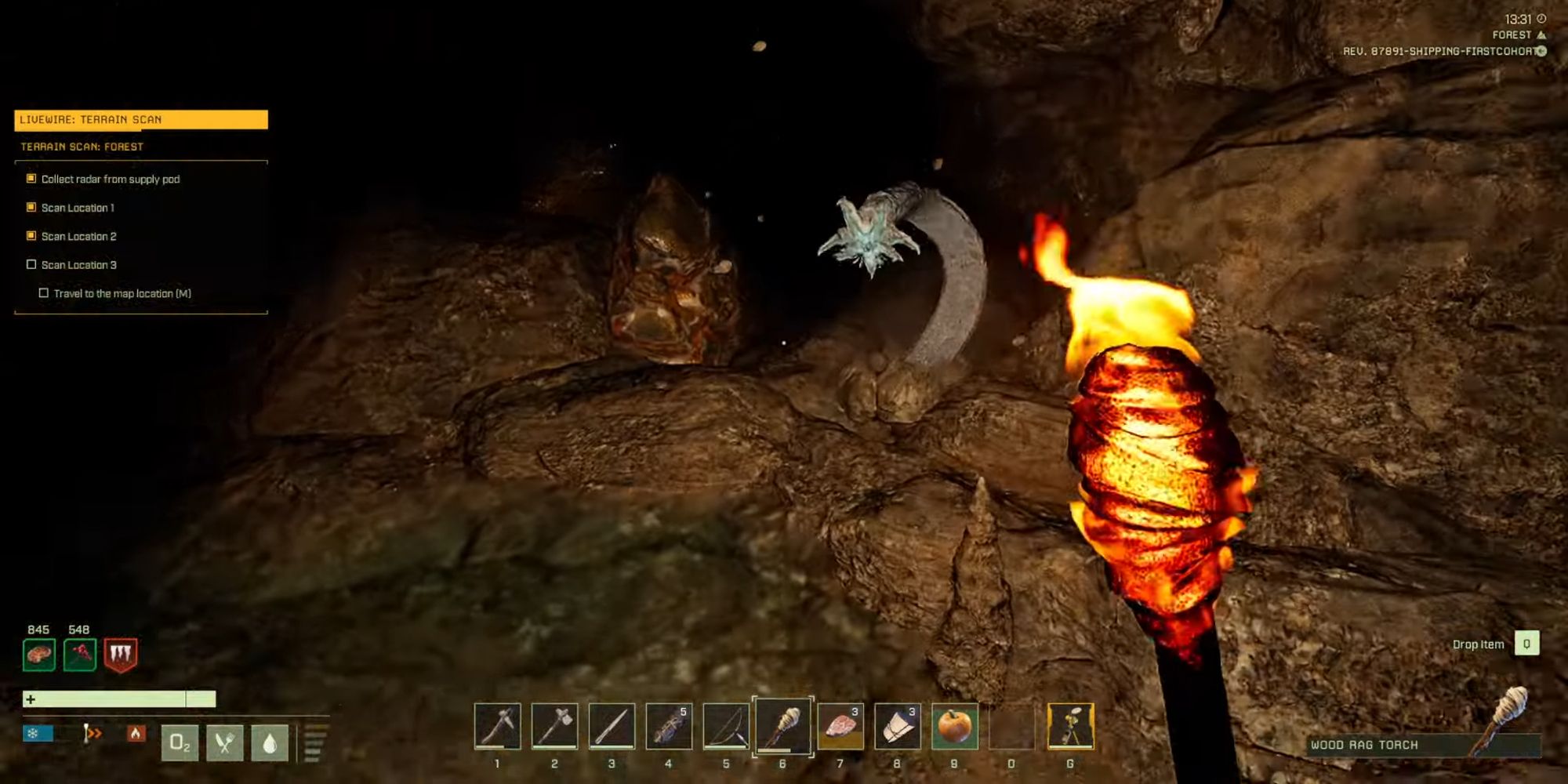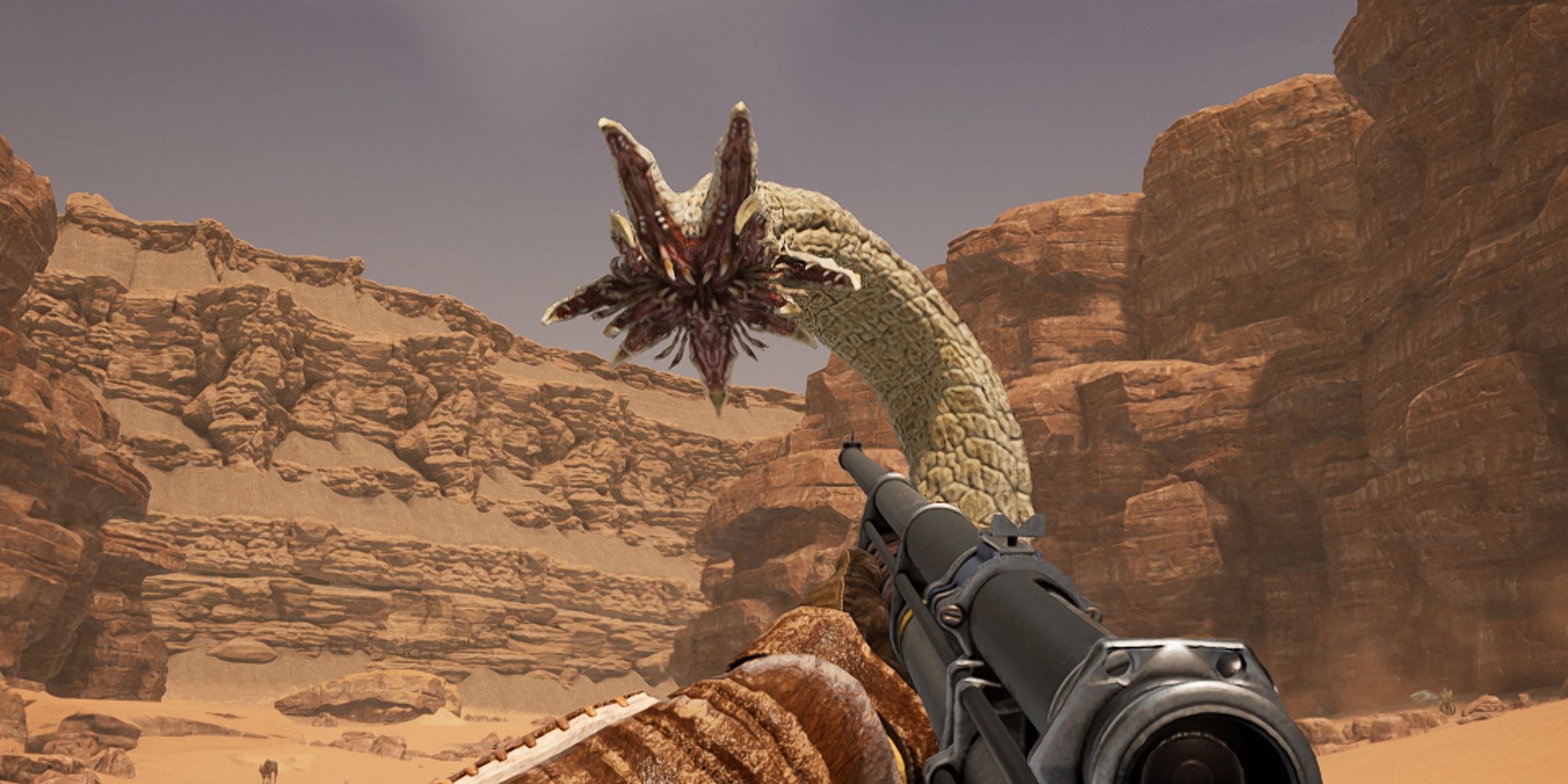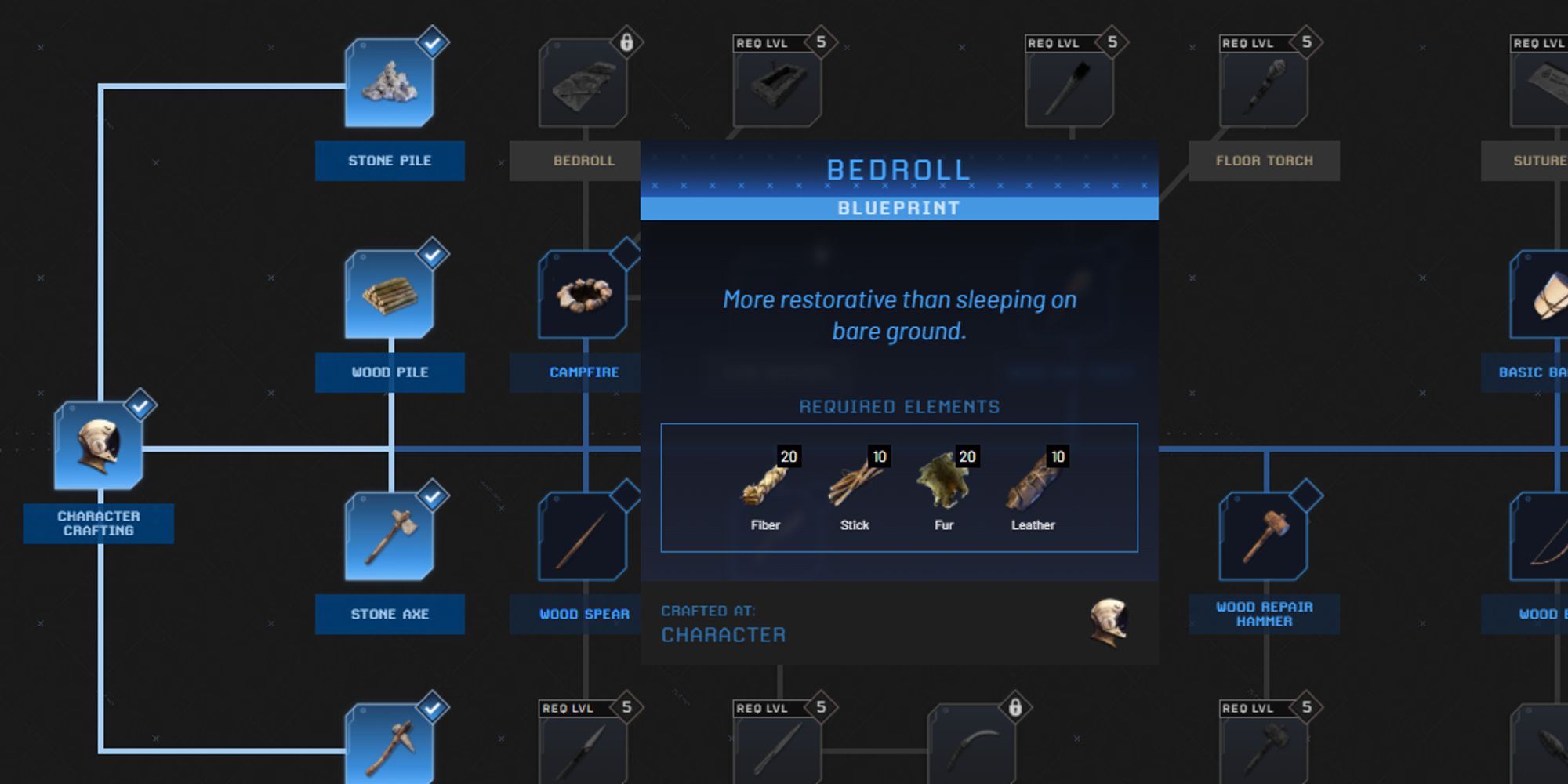Quick Links
There are several biomes that you will come across in Icarus. One of these biomes is the desert. Here, you will face high temperatures and dangerous creatures. Rather than heading in blindly and risking death, we have provided a complete guide to the desert biome to help you on your journey.
In this guide, we are going to go over everything you need to know about the desert biome. Although the biome may seem intimidating at first, it's less harsh than the arctic biome. This means that if you were able to survive the snow and blizzards of the arctic, you can definitely make it through the desert. First, let's take a look at the weather in this sandy biome.
Extreme Desert Temperatures
Similar to deserts in real life, the desert biome in Icarus is hot. Desert temperatures can cause you to overheat, which will inflict the following effects.
- Increased Water Consumption
- Increased Stamina Consumption
This means that you will get thirstier over time, which can eventually lead to dehydration, a status effect that does damage over time.
To prevent overheating, it's important to find a sheltered area to take refuge in. Fortunately, you will be able to find caves in the desert, which are great for taking a break and cooling off.
One of the best ways to quickly cool off is to drink water. Next, let's take a look at water availability in the desert.
Water Shortage
Water is essential to survival in the desert, but it will be incredibly hard to find.
To deal with the lack of water, it's important to have a portable water source, such as a waterskin or thermos. This item will allow you to transport water and drink it when you become thirsty.
Waterskins may leak, but they are better than nothing. Ideally, you should bring a thermos. This item is insulated and does not leak, keeping the cooling properties of water intact.
Lack Of Resources
Like the arctic biome, the desert lacks basic resources, such as sticks, fiber, and wood. As you prepare to enter into the desert, it's important to prepare, bringing resources that you will need in advance.
Below, you can find a list of important items to bring with you into the desert.
-
Cloth Armor
- The full cloth armor set provides a 5% movement speed bonus
- Oxygen Bladder
- Bedroll
- Food
-
Basic Tools and Weapons
- Axe
- Pickaxe
- Bow and Arrows
- Knife
- Antibiotic Paste or Tonic
-
Materials To Build A Simple Shelter
- Wood
- Sticks
- Fiber
Sandstorms
Sandstorms are a type of weather event that can deal serious damage. If you are exposed during a sandstorm, you will take damage over time. With prolonged exposure, you can even die.
The best place to seek shelter during a sandstorm is inside a cave. Caves do not take damage like structures, so you will be safe here. Look out for cave worms that hide within the cave though, if you aren't paying attention, these worms can shoot poison at you, dealing a hefty amount of damage.
Dangerous Creatures
Thankfully, the desert doesn't have bears or polar bears. Instead, you will encounter the following creatures.
- Antelopes
- Chamois
- Hyenas
- Elephants
- Lionesses
- Sandworms
Antelopes and Chamois are passive and will run away if they sense your presence. The other three creatures on this list can be quite dangerous.
Hyenas are similar to wolves found in the forest. With a bow and arrow, you can quickly take down a pack of this creature.
Lionesses are a bit more dangerous. This creature is essentially a stealthy version of the hyena. Lionesses are silent, and can often blend into the desert brush, making them hard to spot.
Next, we have elephants. Elephants can deal a massive amount of damage, but they move slowly and will only engage if you get too close. Thankfully, elephants are easy to spot from far away, making it easy to avoid them. You can usually find elephants around water sources moving very slowly. If you do decide to take on an elephant, you will be able to outrun them. Elephants cannot enter deep water and are vulnerable on the very top of their head.
Lastly, we have the sandworm. This is a giant, poison-spitting worm that can appear in the desert. To deal with this dangerous creature, stand at a distance and shoot it with arrows. This will keep you safe while also dealing damage to the worm.
The Desert At Night
The desert at night can become quite cold. Although daytime temperatures are hot, temperatures can drastically drop when the sun sets.
This can easily be dealt with by having a heat source, such as a campfire or a torch. Additionally, you can sleep the night away if you place a bedroll near a heat source in a secure area.
That's all there is to know about the desert biome. Overall, you need to be mindful of the temperatures and lack of water. A little bit of planning will go a long way when exploring the desert.

